
Introduction to the World of Frostpunk
Frostpunk: The Video Game sports a steampunk coat of paint, the stylish, often meaningless brass cogs and aviator goggles, but the real hook was “global warming in reverse.” It’s a satire equipped with the macabre comedy of that old Robert Frost poem:
Some say the world will end in fire
Some say in ice.
From what I’ve tasted of desire,
I hold with those who favor fire.
But if I had to perish twice,
I think I know enough of hate
To say that for destruction ice
Is also great
And would suffice.
“Global cooling” has come and gone. You, as the leader of a few “lucky” survivors, are managing the aftermath.
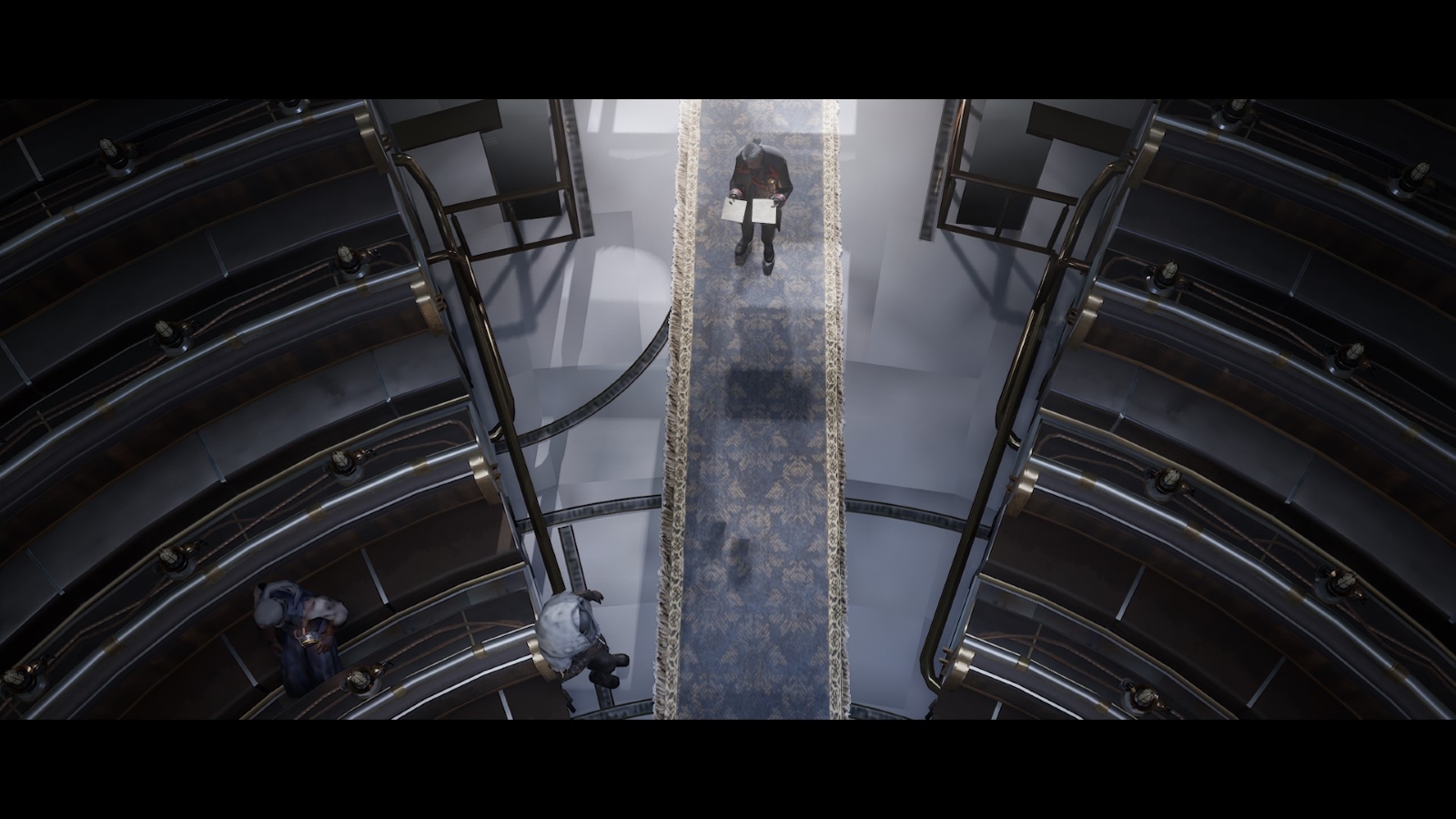
Frostpunk II: Thirty Years Later
Frostpunk II delivers the age-old sequel expectations that generations of salesmen have set before us: bigger, more. It also delivers on the second, informal expectations that generations of audience members have set before us: louder, lesser.
11 Bit Studios has crafted another seminal entry in the city building genre by injecting some messy humanity into the rather cold framework of Sim City, Anno 1900, et al. Once you experience this heady mix of narrative and statesmanship, it’s difficult to return to the staid urban planning of other games.
But that’s a quality the first Frostpunk already possessed and communicated with more clarity and bravery. As I said in my preview, this continuation of Frostpunk’s charter had the potential to hit harder and closer to home. There has rarely been a better time to move political philosophy out of academia and into the public square.
Somewhere during development, however, marketing an agreeable city sim overtook Frostpunk II’s unique qualities and blunted what made it special. This would be less noticeable if the original (and the fantastic board game) weren’t sitting right behind it.
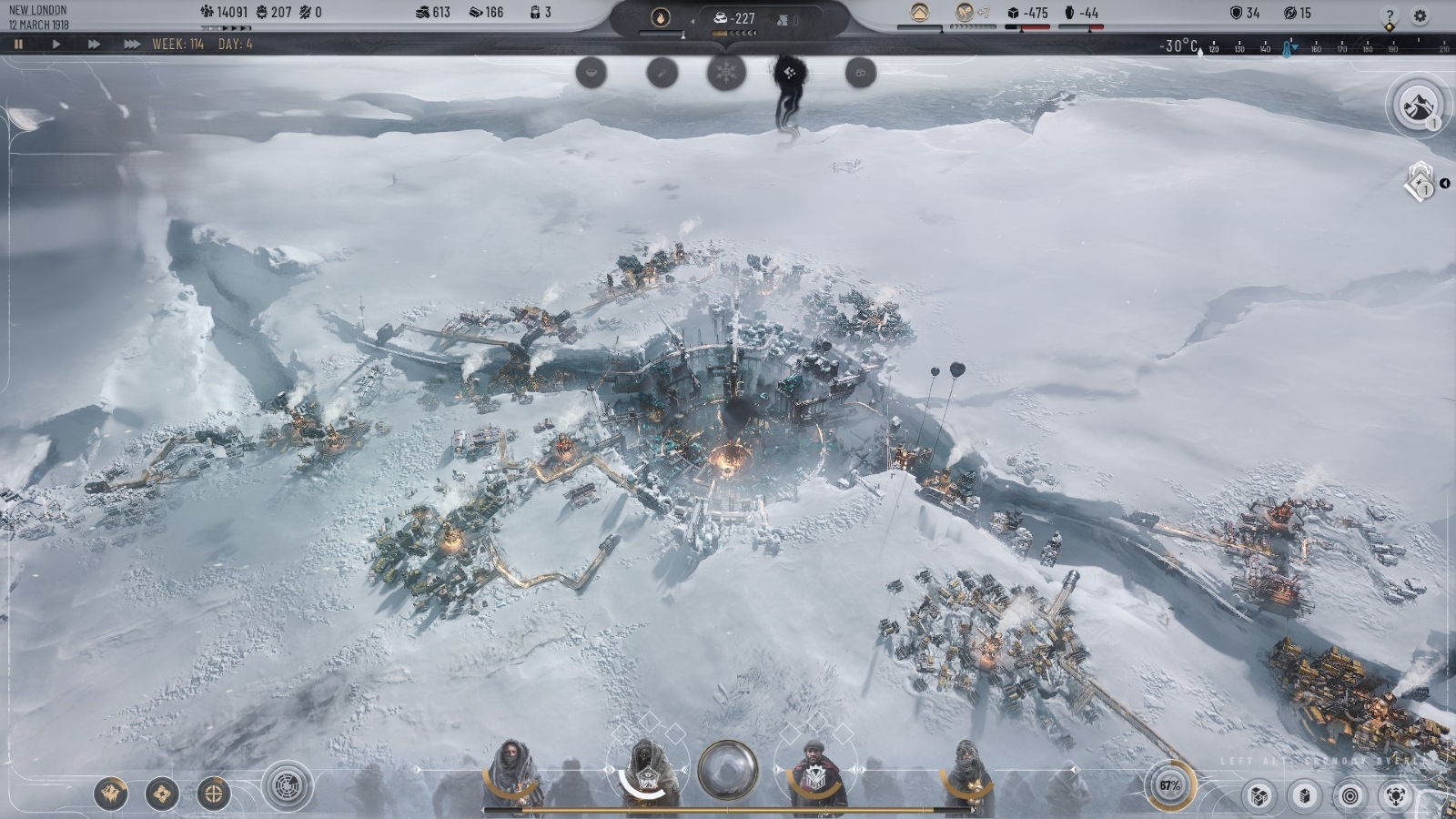
See, Frostpunk was a devastating hate letter to its genre, which has a somewhat deserved reputation for being cuddly. To borrow from Westworld for a moment, the traditional city sim is like Ford’s vision of the park: “perfectly balanced.” Most setups are possible. Frostpunk was Arnold’s Westworld: a mirror and a crucible. It was a fairly short experience (approximately four hours) that didn’t hesitate to flunk you.
Moreover, the collapse could be…precipitous. City sims have sixty types of flashing lights and klaxons before you cross the point of no return. Ahwooga! Ahwooga! My first play of Frostpunk, on the other hand, made my fingers dance between F5 and F9—the ol’ quicksave/load two-step, a move I typically reserve for bad RNG in XCOM.
Frostpunk II has to add the klaxons back in, and rightfully so. It’s much longer. Starting over or winding back the clock works in a four hour game. In a sixteen hour game? The player will revolt before the inhabitants of New London do. As a result, Frostpunk II assumes the languid pace of a Caesar III, which remains a pleasant and soothing thing.
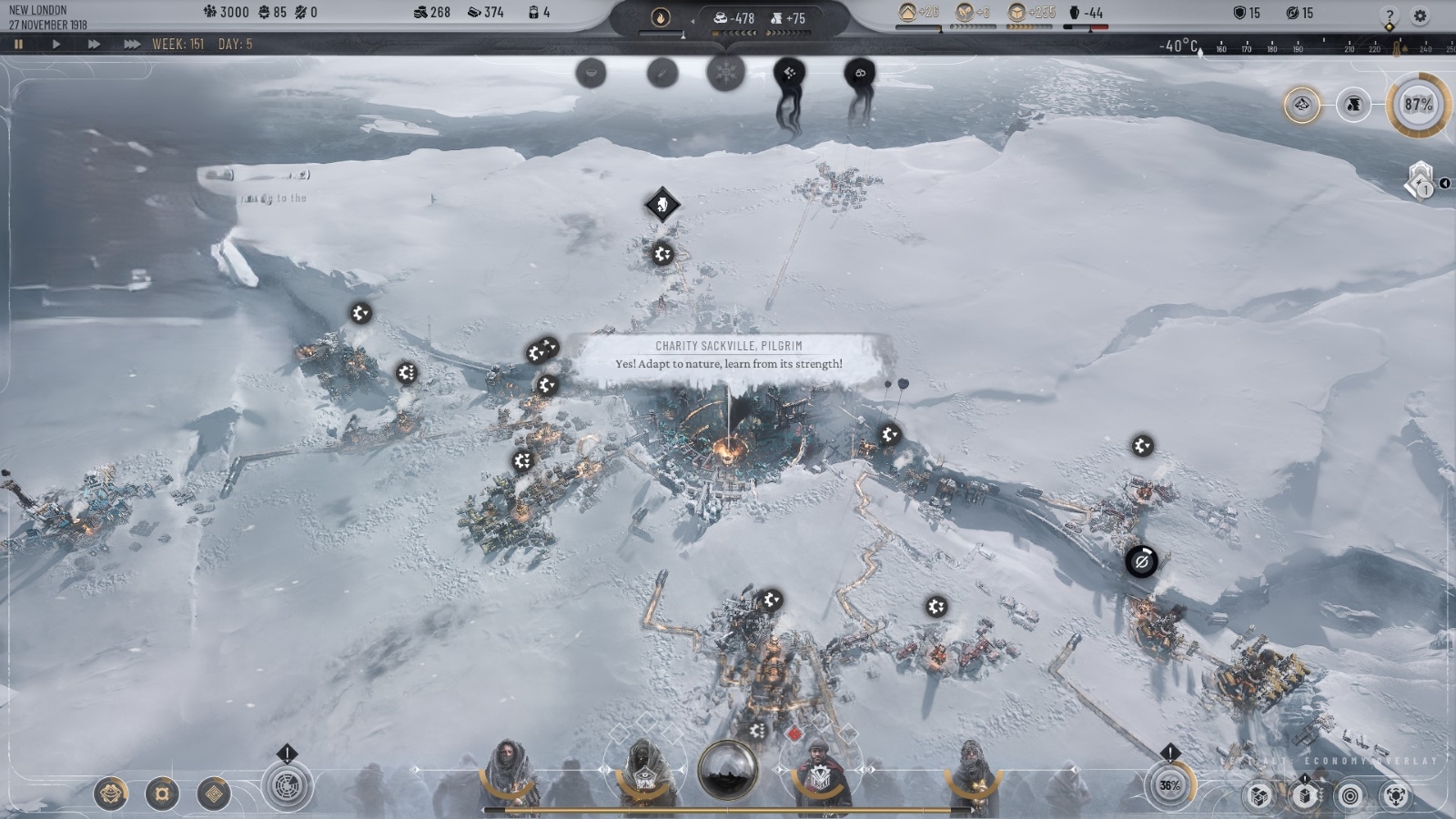
In return, you get some excellent features. The decision tree is grander and its branches are larger. Furthermore, the political factions in your parliament are drawn from a semi-random pool and come with their own bespoke tech trees. Even if you choose the same branches, the same narrative choices, you have so many new tools at your disposal. The factions themselves are your tools, albeit reluctant ones. They can stopgap shortages when you’re in a tight spot, lend funds…or they can hold you over a barrel.
Early on in my campaign, I passed “City Development Effort,” which makes every district in the city produce mass-produced building parts (“prefabs”). That pretty much solved my prefab supply issues until the city rioted and a stubborn group of Frostlanders stood between me and re-establishing order. I had some options, but I was flat broke and one of those deals was free, so I promised “Expedition Support” in exchange for their votes on an armistice.
When the issue went to the council floor, I ultimately failed to pass the bill, I was still on the hook for that promise, and I now lacked any prefabs for building watchtowers. The riots continued, and now I lacked any guards to suppress them.
Those are the moments when Frostpunk II comes alive.
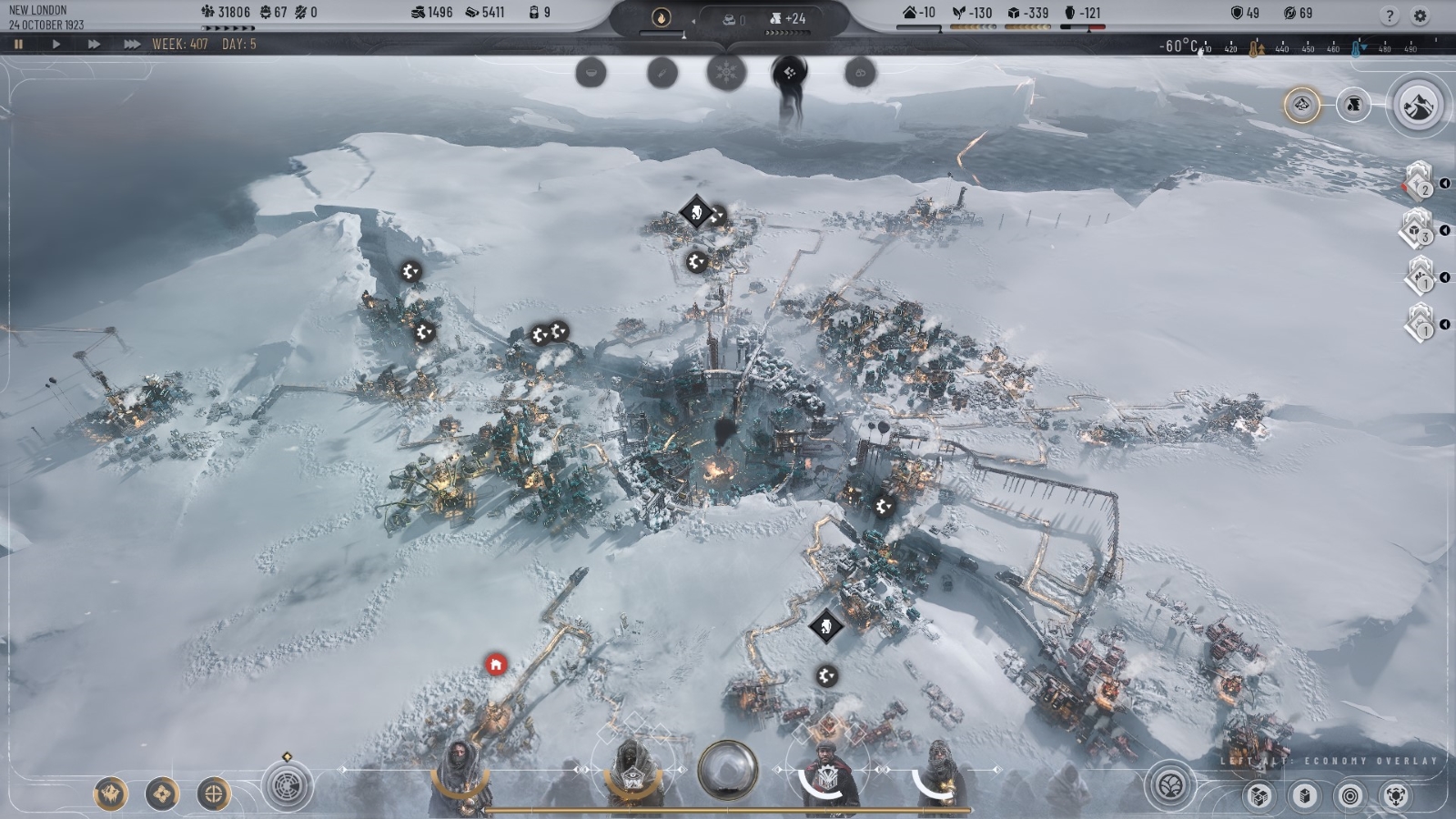
Regarding those aforementioned narrative choices, I want to retain a little secrecy. Frostpunk II has spoilers. I can, however, outline the two load-bearing options: 1) the choice of regime (Order vs. Faith, state dogma vs. theocracy) carried over from the last game; 2) city-state or empire. Those decisions and their combinations birth four significantly different playthroughs.
That second dilemma is insightful. It’s a cultural crossroad that has strong historical resonance. Frostpunk II models it well.
For instance, squalor and overcrowding problems aren’t a problem for the empire builder. When bodies pile up, you can forcibly resettle them in colonies elsewhere in the frozen wastes. At the same time, manpower and currency (“heatstamps”) will become scarcer and increase the costs of deep melting drills and heavy industrial buildings. That’s a shortcoming the city-state won’t have.
With those macro decisions come the microscopic ones that keep your mouse and brain engaged. Unexpected synergies between faction techs arise in each playthrough and you build fresh engines. Districts, which replace singular buildings, deploy in clumps and better reward planning and placement. Adjacency bonuses will give you those dopamine hits when you stack a set of city districts just right. The gameplay loop tickles your brainpan and there’s a greater emphasis on the pleasures of ticking those to-do boxes. That’s something you can spot on the menu screen. Frostpunk‘s endless mode was cute, but it came seven months after release. It was dessert. Frostpunk II was built for the Utopia Builder from the ground up and feels like it. Perfectly balanced.
And yet it feels so empty. I can’t think of a single event in it which made me care about the city under my stewardship or the people in it.

As a steward, you’re detached from the things that make a city a home, the personal tragedies and triumphs. Minus the quirky biographies of the senatorial class (“collects fingers severed by machinery” is…an interesting hobby), individuals have zero presence or narrative in the tapestry of New London.
In the first game, various events formed miniature arcs and grounded the story in something more moving than policy. A father hunting for his daughter or a worker with gangrene became an ongoing concern. Most Frostpunk II events are blips, and sometimes they feel like cheap melodrama. Don’t expect any of the writing that haunted you from Frostpunk or This War of Mine. I weighed in on an immigration issue to reunite a mother with their child. She died almost instantly and was one name among eighteen in a casualty report. So tragic. Now about that salvage factory….
The game’s scope is somewhat responsible for this, and it tries to compensate with a handful of flourishes. Little bulletins contain streams of consciousness and a name. When you boot up your save, the face of a citizen surfaces out of the inky void like the die in a Magic 8 Ball. The campaign’s epilogue contains a stinger in the form of Lily May, a little girl born in the first year of your reign; her fate fourteen years later reflects your choices.
On a personal note, Lily’s symbolism didn’t land for me because there’s no narrative bridge between her birth and the end of the game. I’m comfortable spoiling that so players can look forward to the reveal rather than forget about her existence entirely.
I appreciate these touches. They offer some intimacy against an overwhelming backdrop. They’re not enough.

Frustratingly, there are hints of a more imaginative and evocative concept under the surface. Cultural developments and weird factional philosophies could have produced cities and citizens with character to spare. Essentially, the “ideas” tree could have explored more than a new building for harvesting materials; it could have explored, well, ideas.
The Faithkeepers are described as worshipers of the generator and regard it as sacred. You almost expect them to prepare virgin sacrifices, praise the Omnissiah, and speak exclusively in boiler metaphors. “May your vapors be ever noble, brother.” Each faction has a “Radical Ideas” tree you can unlock by leaning into it, so what are the most extreme ideas of these furnace-lovin’ holy rollers?
Well, mostly the timeworn dystopian stuff you expect from Huxley’s Brave New World or a Westboro Baptist church group: pleasure domes, joy pills, forced procreation, and the usual fascist paraphernalia. Nothing specific to this setting. Nothing memorable.
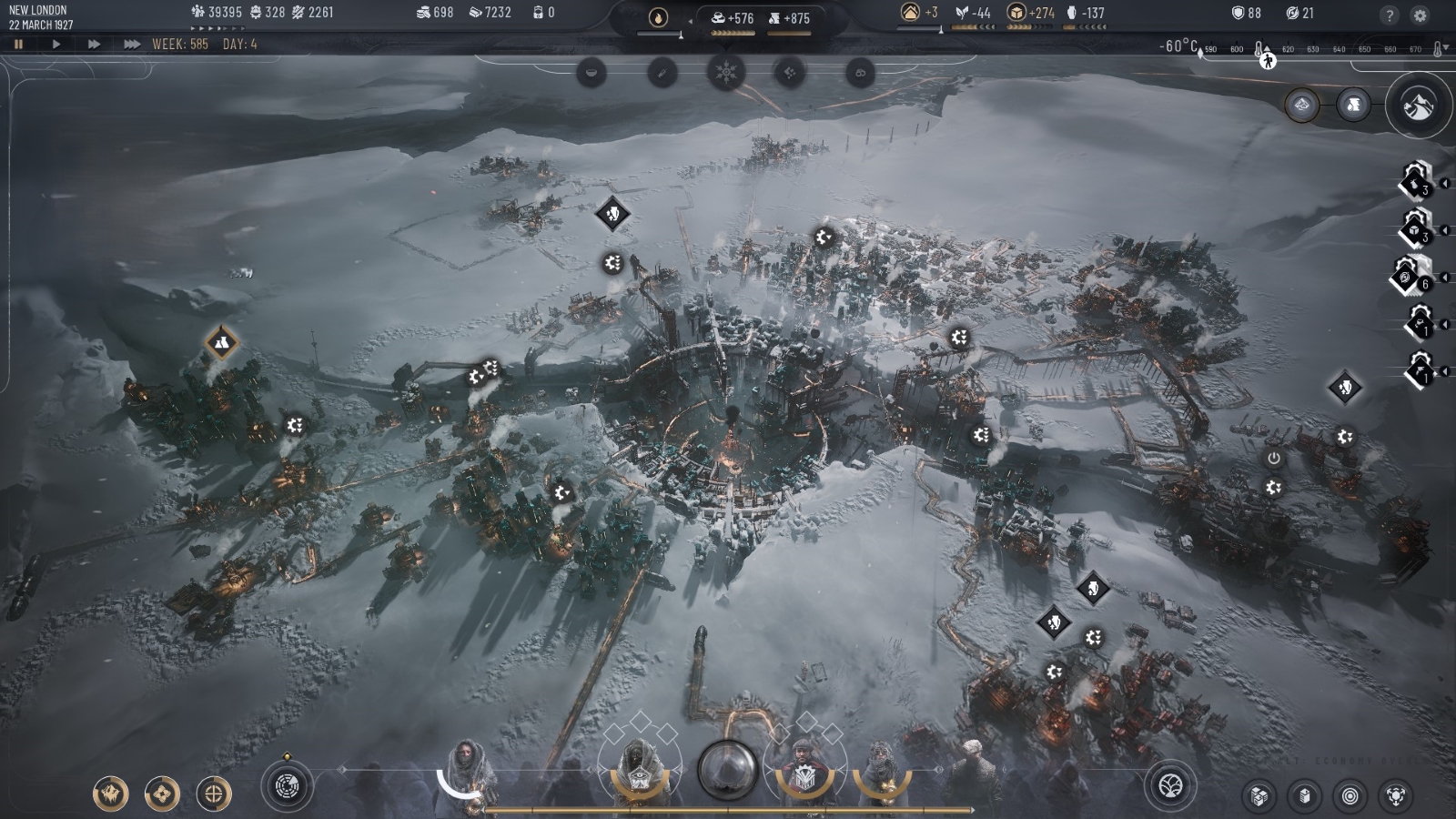
“Survival” remains the motif despite the allure of a Frostpunk sequel being about, when you get right down to it, what lies beyond survival. What’s the distinctive character of New London in any of its incarnations? I’m not sure it has one. The Lego approach has absorbed too much of the design. I can see the individual bricks quite clearly.
Don’t mistake me: Frostpunk II manages to outdo its competition by a fair margin because any narrative’s better than faffing about. Wheeling and dealing in a mock parliament and the finer bits of engineering sometimes come together and get your heart pumping. But it aims lower than it could. It aims lower than it did.
I got a kick out of manning the steward’s desk and playing senator. I loved rolling that D100 on a spicy piece of legislation and pivoting when it unexpectedly failed. I guess I just wanted to meet my constituents, too. And no, their disembodied heads don’t count.
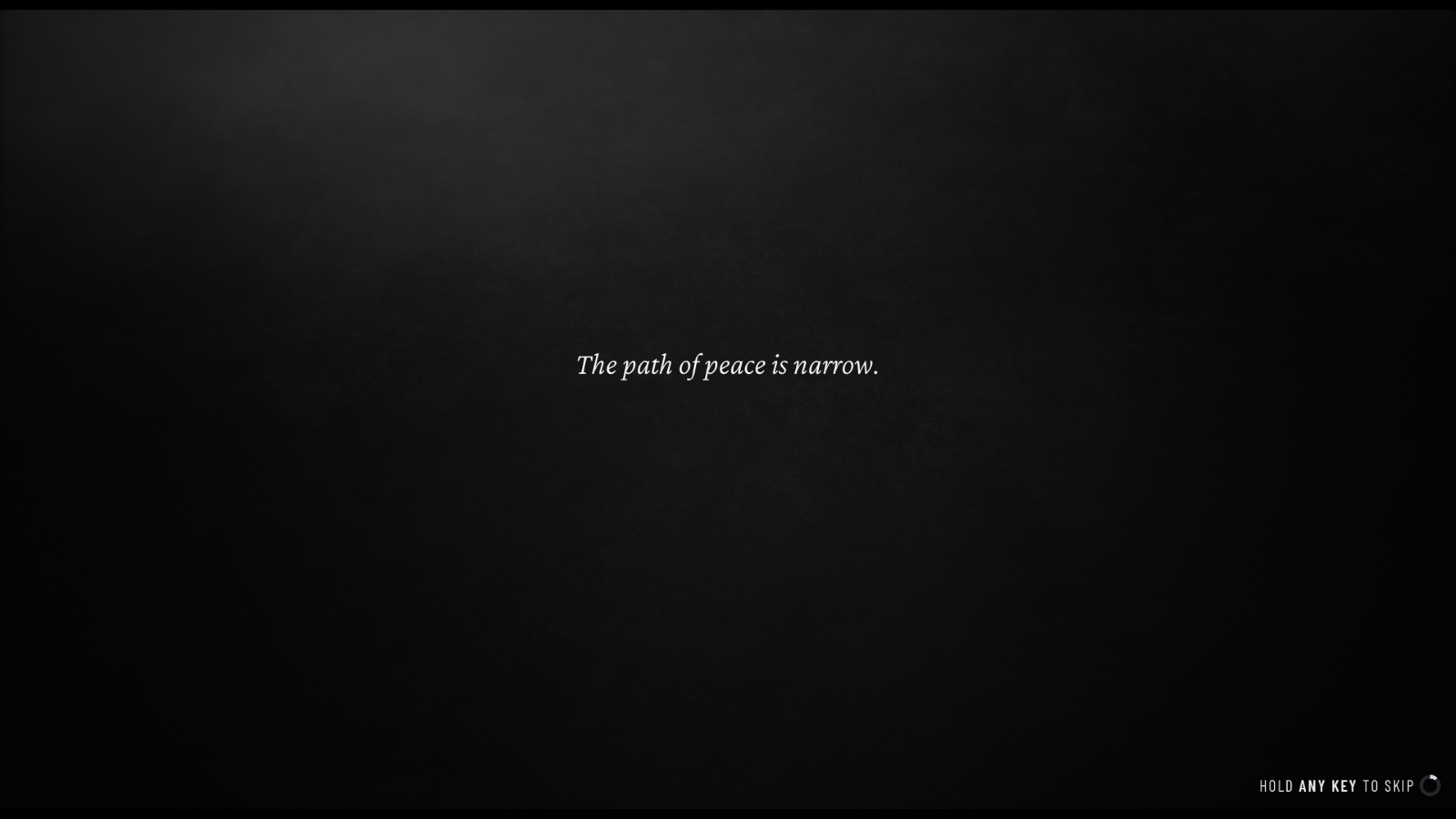
Frostpunk 2
Good
Frostpunk II has lovely and intimate details, but the big picture is chilly and rigid. The promise of pioneering a new culture becomes yet another tale of survival at all costs.
Pros
- Dynamic tech tree.
- Lots of levers to pull and finesse to exercise over your city.
- Relaxing gameplay rhythm.
Cons
- Society building feels unimaginative.
- Factions are somewhat bland.
- Writing's a bit flat.
